BLOG - Page 22
Recently created mixtures:

Sea-Buckthorn Macerated oil
February 7, 2019

Home made air freshener
June 29, 2016

Homemade Dog-rose distillate
June 28, 2016

Homemade jasmine distillate
June 22, 2016

Moxibustion treatment with Moxa stick
May 30, 2016

Face and body gentle oil cleanser
May 26, 2016
BLOG / LATEST ADDITIONS!
Stevia Extract (Stevia Rebaudiana) ☸ Ingredients ☸ Base / General
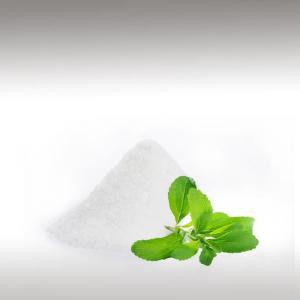

Stevia is a sweetener and sugar substitute extracted from the leaves of the plant species Stevia Rebaudiana.
Stevia is a South American herb used as a natural sweetener for centuries. The leaves of the Stevia Rebaudiana plant have a refreshing taste, zero glycemic index, zero calories and zero carbs. It is 25 - 30 times sweeter than Sugar, and far more healthy.
Stevia has no calories, and it is 200 times sweeter than Sugar in the same concentration. Other studies suggest Stevia might have extra health benefits.
The Stevia plant is part of the Asteraceae family, related to the daisy and ragweed. Several Stevia species called "Candyleaf" are native to New Mexico, Arizona and Texas. It is part of the Sunflower family and its leaves are naturally sweet. In fact, the indigenous people used to chew them for their sweet taste and use them to naturally sweeten beverages.
The plant Stevia Rebaudiana has been used for more than 1,500 years by the Guaraní peoples of South America, who called it Ka'a he'ê ("Sweet Herb"). The leaves have been used traditionally for hundreds of years in both Brazil and Paraguay to sweeten local teas and medicines, and as a "Sweet Treat".
Stevia's taste has a slower onset and longer duration than that of Sugar, and some of its extracts may have a bitter or Licorice - like aftertaste at high concentrations.
Chemical structure:
Extraction metod: Rebaudioside A has the least bitterness of all the steviol glycosides in the Stevia Rebaudiana plant.
Stevia is a South American herb used as a natural sweetener for centuries. The leaves of the Stevia Rebaudiana plant have a refreshing taste, zero glycemic index, zero calories and zero carbs. It is 25 - 30 times sweeter than Sugar, and far more healthy.
Stevia has no calories, and it is 200 times sweeter than Sugar in the same concentration. Other studies suggest Stevia might have extra health benefits.
The Stevia plant is part of the Asteraceae family, related to the daisy and ragweed. Several Stevia species called "Candyleaf" are native to New Mexico, Arizona and Texas. It is part of the Sunflower family and its leaves are naturally sweet. In fact, the indigenous people used to chew them for their sweet taste and use them to naturally sweeten beverages.
The plant Stevia Rebaudiana has been used for more than 1,500 years by the Guaraní peoples of South America, who called it Ka'a he'ê ("Sweet Herb"). The leaves have been used traditionally for hundreds of years in both Brazil and Paraguay to sweeten local teas and medicines, and as a "Sweet Treat".
Stevia's taste has a slower onset and longer duration than that of Sugar, and some of its extracts may have a bitter or Licorice - like aftertaste at high concentrations.
Chemical structure:
Extraction metod: Rebaudioside A has the least bitterness of all the steviol glycosides in the Stevia Rebaudiana plant.
To produce rebaudioside A commercially, Stevia plants are dried and subjected to a water extraction process. This crude extract contains about 50% rebaudioside A. The various glycosides are separated and purified via crystallization techniques, typically using ethanol or methanol as solvent.
The active compounds of Stevia are steviol glycosides, which have up to 150 times the sweetness of Sugar are heat - stable, pH - stable, and not fermentable.
The active compounds of Stevia are steviol glycosides, which have up to 150 times the sweetness of Sugar are heat - stable, pH - stable, and not fermentable.
Submitted by OperaDreamhouse (June 4, 2015)
Jar ☸ Tools ☸ Base / General
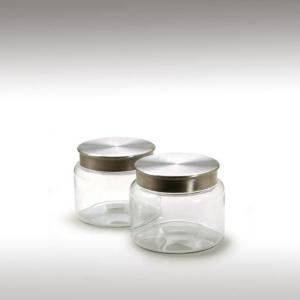

Jars are very convenient capacity to store oil. The Jar fits very well to produce oil infusers. Very well that Jar has dark brown or dark blue glass color. Oils keeps better in a glass container. Plastic storage container designed to store oil for the short time.
Submitted by OperaDreamhouse (June 4, 2015)
Poppy Seed Oil (Papaver Somniferum) ☸ Base oils ☸ Base / General
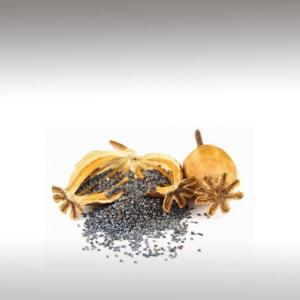

While growing Poppies islegal, it is illegal to process what is grown into the drug form.
Poppyseed oil (also Poppy Seed oil, Poppy oil) is an edible oil from Poppy seeds (Seeds of Papaver Somniferum, the Opium Poppy). The oil has culinary and pharmaceutical uses, as well as long established uses in the making of paints, varnishes, and soaps.
Seventy to 100 different varieties of the Poppy exist. The Opium Poppy is a small annual, but other Poppy species may be annual, biennial, or perennial. The bright showy flowers of the genus Papaver range in color from white to deep reds and purples. The seeds of the plants vary in color from light cream to blue - black and are numerous and minutely pitted. Sap from the seed pods may be white, orange, or red.
Poppy Seed oil is a clear, light yellow oil with a pleasant smell.
The earliest accounts of the use of poppy preparations date to the ancient Sumerians in Mesopotamia, where the plant was used medicinally and was known as Hul Gil (the Plant of Joy).
Poppy Seed oil is a drying oil. In oil painting, it is a popular oil for binding pigment, thinning paint, and varnishing finished paintings. Poppy seed oil has been used for painting for at least 1500 years - one of the oldest known oil paintings, found in caves of Afghanistan and dated to AD 650, was likely drawn using Poppy seed oil.
An early 20th century industry manual states that while the Opium Poppy was grown extensively in Eurasia, most of the world production of Poppy seed oil occurred in France and Germany, from Poppy seeds imported from other countries.
From 1900 to 1911, France and Germany together produced on the order of 60,000,000 kilograms per year. At that time, poppyseed oil was used primarily to dress salads and frequently was adulterated with Sesame oil and Hazelnut oil to improve the taste of oil from stored (rancid) seeds.
Chenical strucutre:
Poppy seed oil is a carrier oil, having little or no odor and a pleasant taste. The primary aroma compound responsible for its flavor is 2 - pentylfuran, also present are the volatilecompounds 1 - pentanol, 1 -hexanal, 1 - hexanol, and caproic acid.
Poppy seeds yield 45 - 50% oil. Like Poppy seeds, Poppy Seed oil is highly palatable, high in Vitamin E.
Poppy Seed oil from one source has been reported to contain 30,9 mg gamma-tocopherol per 100 g. It also contains alphaand gamma tocotrienols, but not others. Compared to other vegetable oils, Poppy Seed oil has a moderate amount of phytosterols: higher than Soybean oil and Peanut oil, lower than Safflower oil, Sesame oil, Wheat Germ oil, Corn oil, and Rice Bran oil.
Sterols in Poppy Seed oil consist almost entirely of campesterol, stigmasterol, sitosterol and delta 5 - avenasterol.
Poppy seed oil is high in linoleic acid. Other triglycerides present in notable quantities are oleic acid and palmitic acid.
Poppyseed oil (also Poppy Seed oil, Poppy oil) is an edible oil from Poppy seeds (Seeds of Papaver Somniferum, the Opium Poppy). The oil has culinary and pharmaceutical uses, as well as long established uses in the making of paints, varnishes, and soaps.
Seventy to 100 different varieties of the Poppy exist. The Opium Poppy is a small annual, but other Poppy species may be annual, biennial, or perennial. The bright showy flowers of the genus Papaver range in color from white to deep reds and purples. The seeds of the plants vary in color from light cream to blue - black and are numerous and minutely pitted. Sap from the seed pods may be white, orange, or red.
Poppy Seed oil is a clear, light yellow oil with a pleasant smell.
The earliest accounts of the use of poppy preparations date to the ancient Sumerians in Mesopotamia, where the plant was used medicinally and was known as Hul Gil (the Plant of Joy).
Poppy Seed oil is a drying oil. In oil painting, it is a popular oil for binding pigment, thinning paint, and varnishing finished paintings. Poppy seed oil has been used for painting for at least 1500 years - one of the oldest known oil paintings, found in caves of Afghanistan and dated to AD 650, was likely drawn using Poppy seed oil.
An early 20th century industry manual states that while the Opium Poppy was grown extensively in Eurasia, most of the world production of Poppy seed oil occurred in France and Germany, from Poppy seeds imported from other countries.
From 1900 to 1911, France and Germany together produced on the order of 60,000,000 kilograms per year. At that time, poppyseed oil was used primarily to dress salads and frequently was adulterated with Sesame oil and Hazelnut oil to improve the taste of oil from stored (rancid) seeds.
Chenical strucutre:
Poppy seed oil is a carrier oil, having little or no odor and a pleasant taste. The primary aroma compound responsible for its flavor is 2 - pentylfuran, also present are the volatilecompounds 1 - pentanol, 1 -hexanal, 1 - hexanol, and caproic acid.
Poppy seeds yield 45 - 50% oil. Like Poppy seeds, Poppy Seed oil is highly palatable, high in Vitamin E.
Poppy Seed oil from one source has been reported to contain 30,9 mg gamma-tocopherol per 100 g. It also contains alphaand gamma tocotrienols, but not others. Compared to other vegetable oils, Poppy Seed oil has a moderate amount of phytosterols: higher than Soybean oil and Peanut oil, lower than Safflower oil, Sesame oil, Wheat Germ oil, Corn oil, and Rice Bran oil.
Sterols in Poppy Seed oil consist almost entirely of campesterol, stigmasterol, sitosterol and delta 5 - avenasterol.
Poppy seed oil is high in linoleic acid. Other triglycerides present in notable quantities are oleic acid and palmitic acid.
Submitted by OperaDreamhouse (June 2, 2015)
Pistachio Oil (Pistacia Vera) ☸ Base oils ☸ Base / General
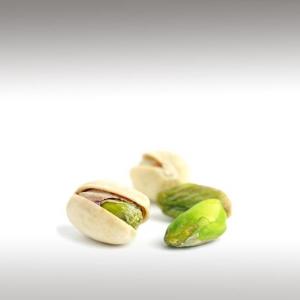

The earliest records of Pistachio in English are around roughly year 1400, with the spellings “Pistace” and “Pistacia”.
The word Pistachio comes from medieval Italian Pistacchio, which is from classical Latin Pistacium, which is from ancient Greek Pistákion and Pistákē, which is generally believed to be from Middle Persian, although unattested in Middle Persian. Later in Persian, the word is attested in Persian as Pesteh. As mentioned, the tree came to the ancient Greeks from Western Asia.
The Pistachio a member of the Cashew family, is a small tree originating from Central Asia and the Middle East. Pistachio trees can be found in regions of Iran, Syria, Lebanon, Turkey, Greece, Xinjiang (China), Tunisia, Kyrgyzstan, Tajikistan, Turkmenistan, India, Egypt, Italy (Sicily), Uzbekistan, Afghanistan (especially in the provinces of Samangan and Badghis), and the United States(California).
It is indigenous to the eastern Mediterranean (Cyprus and Turkey to Israel and Syria), Central Asia (Turkmenistan, Uzbekistan, Afghanistan, Tajikistan, and Kyrgyzstan) and Xinjiang.
Pistachio is a desert plant, and is highly tolerant of saline soil. Pistachio trees are fairly hardy in the right conditions, and can survive temperatures ranging between -10 °C in winter and 48 °C in summer. They need a sunny position and well - drained soil.
The bush grows up to 10 m tall. It has deciduous pinnate leaves 10 - 20 centimeters long. The plants are dioecious, with separatemaleand female trees. The fruit is a drupe, containing an elongated seed, which is the edible portion.
The fruit has a hard, creamish exterior shell. The seed has a mauvish skin and light green flesh, with a distinctive flavor. When the fruit ripens, the shell changes from green to an autumnal yellow / red, and abruptly splits part way open. This is known as dehiscence, and happens with an audible pop.
Each Pistachio tree averages around 50 kilograms of seeds, or around 50,000, every two years.
It takes 5 - 8 years until the trees come to fruition and only after 15 years, crops are abundant. Crop rotation is very two years which means that the crop is altemately larger and smaller.
Pistachio oil is a pressed oil, extracted from the fruit of Pistacia Vera, the Pistachio nut. Compared to other Nut oils, Pistachio oil has a particularly strong flavor. Like other Nut oils, it tastes similar to the nut from which it is extracted.
Pliny the Elder writes in his Natural History that Pistachio seeds were a common food as early as 6750 BC. asserts that Pistacia, “well known among us” was one of the trees unique to Syria, and that the seed was introduced into Italy by the Roman Proconsul in Syria.
The Pistachio is one of three seeds mentioned in the Bible.
Archaeologists have found evidence from excavations at Jarmo in northeastern Iraq. The Hanging Gardens of Babylon were said to have contained Pistachio trees during the reign of King Merodach - Baladan about 700 BC.
Chemical structure:
Pistachio oil is high in Vitamin E, containing 19mg/100g. It contains 12,7% saturated fats, 53,8% monounsaturated fats, 32,7% linoleic acid, and 0,8% omega - 3 fatty acid.
Pistachio kernel oil has a very well balanced ratio of omega - 9 and omega - 6 (essential fatty acids) and is more stable than Walnut oil.
The nuts are packed with many importantB - complex groups of Vitamins such as riboflavin, niacin, thiamin, pantothenic acid, vitamin B - 6, and folates.
They are the storehouse of minerals like copper, manganese, potassium, calcium, iron, magnesium, zinc, and selenium.
100 g nuts provide 144% of daily - recommended levels of copper. Copper is an essential trace mineral that is required in neuro - transmission, metabolism, as well as red blood cell (RBC) prodution.
The word Pistachio comes from medieval Italian Pistacchio, which is from classical Latin Pistacium, which is from ancient Greek Pistákion and Pistákē, which is generally believed to be from Middle Persian, although unattested in Middle Persian. Later in Persian, the word is attested in Persian as Pesteh. As mentioned, the tree came to the ancient Greeks from Western Asia.
The Pistachio a member of the Cashew family, is a small tree originating from Central Asia and the Middle East. Pistachio trees can be found in regions of Iran, Syria, Lebanon, Turkey, Greece, Xinjiang (China), Tunisia, Kyrgyzstan, Tajikistan, Turkmenistan, India, Egypt, Italy (Sicily), Uzbekistan, Afghanistan (especially in the provinces of Samangan and Badghis), and the United States(California).
It is indigenous to the eastern Mediterranean (Cyprus and Turkey to Israel and Syria), Central Asia (Turkmenistan, Uzbekistan, Afghanistan, Tajikistan, and Kyrgyzstan) and Xinjiang.
Pistachio is a desert plant, and is highly tolerant of saline soil. Pistachio trees are fairly hardy in the right conditions, and can survive temperatures ranging between -10 °C in winter and 48 °C in summer. They need a sunny position and well - drained soil.
The bush grows up to 10 m tall. It has deciduous pinnate leaves 10 - 20 centimeters long. The plants are dioecious, with separatemaleand female trees. The fruit is a drupe, containing an elongated seed, which is the edible portion.
The fruit has a hard, creamish exterior shell. The seed has a mauvish skin and light green flesh, with a distinctive flavor. When the fruit ripens, the shell changes from green to an autumnal yellow / red, and abruptly splits part way open. This is known as dehiscence, and happens with an audible pop.
Each Pistachio tree averages around 50 kilograms of seeds, or around 50,000, every two years.
It takes 5 - 8 years until the trees come to fruition and only after 15 years, crops are abundant. Crop rotation is very two years which means that the crop is altemately larger and smaller.
Pistachio oil is a pressed oil, extracted from the fruit of Pistacia Vera, the Pistachio nut. Compared to other Nut oils, Pistachio oil has a particularly strong flavor. Like other Nut oils, it tastes similar to the nut from which it is extracted.
Pliny the Elder writes in his Natural History that Pistachio seeds were a common food as early as 6750 BC. asserts that Pistacia, “well known among us” was one of the trees unique to Syria, and that the seed was introduced into Italy by the Roman Proconsul in Syria.
The Pistachio is one of three seeds mentioned in the Bible.
Archaeologists have found evidence from excavations at Jarmo in northeastern Iraq. The Hanging Gardens of Babylon were said to have contained Pistachio trees during the reign of King Merodach - Baladan about 700 BC.
Chemical structure:
Pistachio oil is high in Vitamin E, containing 19mg/100g. It contains 12,7% saturated fats, 53,8% monounsaturated fats, 32,7% linoleic acid, and 0,8% omega - 3 fatty acid.
Pistachio kernel oil has a very well balanced ratio of omega - 9 and omega - 6 (essential fatty acids) and is more stable than Walnut oil.
The nuts are packed with many importantB - complex groups of Vitamins such as riboflavin, niacin, thiamin, pantothenic acid, vitamin B - 6, and folates.
They are the storehouse of minerals like copper, manganese, potassium, calcium, iron, magnesium, zinc, and selenium.
100 g nuts provide 144% of daily - recommended levels of copper. Copper is an essential trace mineral that is required in neuro - transmission, metabolism, as well as red blood cell (RBC) prodution.
Submitted by OperaDreamhouse (June 2, 2015)
Milk Thistle Oil (Silybum Marianum) ☸ Base oils ☸ Base / General
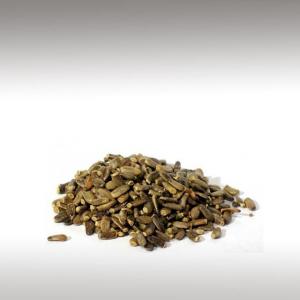

Silybum Marianum has other common names include Cardus Marianus, Milk Thistle, Blessed Milk Thistle, Marian Thistle, Mary Thistle, Saint Mary's Thistle, Mediterranean Milk Thistle, Variegated Thistle and Scotch Thistle. This species is an annual or biennial plant of the Asteraceae family.
This fairly typical Thistle has red to purple flowers and shiny pale green leaves with white veins. Originally a native of Southern Europe through to Asia, it is now found throughout the world.
Possibly native near the coast of southeast England, it has been widely introduced outside its natural range, for example into North America, Iran, Australia and New Zealand where it is considered an invasive weed.
Milk Thistle (Silybum Marianum) is a thorny plant presenting decorative leaves with a white pattern of veins and purple flower heads. The plant originates from mountains of the Mediterranean region, where it forms scrub on a rocky base.
It grows 30 to 200 cm tall, having an overall conical shape with an approx.The flower heads are 4 to 12 cm long and wide, of red - purple colour. They flower from June to August in the North or December to February in the Southern Hemisphere ( Summer through Autumn ). The achenes are black, with a simple long white pappus, surrounded by a yellow basal ring.
The seeds of Milk Thistle are one of the most important herbal liver medicines. The sylimarin contained in them is an effective life - saving agent even in cases of poisoning with a lethal dose of death cap mushroom.
Milk Thistles are currently cultivated in large numbers in many countries of the world - for use by the pharmaceutical industry - including: Austria, Poland, Germany, Hungary, China, and Argentina. The plant is typically harvested 2 to 3 weeks after flowering - via a two - step process: cutting and threshing.
Milk Thistle gets its name from the milky sap that comes out of the leaves when they are broken. The leaves also have unique white markings that, according to legend, were the Virgin Mary’s milk.
Don’t confuse Milk Thistle with Blessed Thistle (Cnicus Benedictus).
Chemical structure:
Traditional Milk Thistle extract is made from the seeds, which contain approximately 46% silymarin. The extract consists of about 65 - 80% silymarin (a flavonolignancomplex) and 20 - 35% fatty acids, includinglinoleic acid.
Silymarin is a complex mixture of polyphenolic molecules, including seven closely related flavonolignans (silybin A, silybin B, isosilybin A, isosilybin B, silychristin, isosilychristin, silydianin) and oneflavonoid (taxifolin). Silibinin, a semipurified fraction of silymarin, is primarily a mixture of 2 diastereoisomers, silybin A and silybin B, in a roughly 1: 1 ratio.
This fairly typical Thistle has red to purple flowers and shiny pale green leaves with white veins. Originally a native of Southern Europe through to Asia, it is now found throughout the world.
Possibly native near the coast of southeast England, it has been widely introduced outside its natural range, for example into North America, Iran, Australia and New Zealand where it is considered an invasive weed.
Milk Thistle (Silybum Marianum) is a thorny plant presenting decorative leaves with a white pattern of veins and purple flower heads. The plant originates from mountains of the Mediterranean region, where it forms scrub on a rocky base.
It grows 30 to 200 cm tall, having an overall conical shape with an approx.The flower heads are 4 to 12 cm long and wide, of red - purple colour. They flower from June to August in the North or December to February in the Southern Hemisphere ( Summer through Autumn ). The achenes are black, with a simple long white pappus, surrounded by a yellow basal ring.
The seeds of Milk Thistle are one of the most important herbal liver medicines. The sylimarin contained in them is an effective life - saving agent even in cases of poisoning with a lethal dose of death cap mushroom.
Milk Thistles are currently cultivated in large numbers in many countries of the world - for use by the pharmaceutical industry - including: Austria, Poland, Germany, Hungary, China, and Argentina. The plant is typically harvested 2 to 3 weeks after flowering - via a two - step process: cutting and threshing.
Milk Thistle gets its name from the milky sap that comes out of the leaves when they are broken. The leaves also have unique white markings that, according to legend, were the Virgin Mary’s milk.
Don’t confuse Milk Thistle with Blessed Thistle (Cnicus Benedictus).
Chemical structure:
Traditional Milk Thistle extract is made from the seeds, which contain approximately 46% silymarin. The extract consists of about 65 - 80% silymarin (a flavonolignancomplex) and 20 - 35% fatty acids, includinglinoleic acid.
Silymarin is a complex mixture of polyphenolic molecules, including seven closely related flavonolignans (silybin A, silybin B, isosilybin A, isosilybin B, silychristin, isosilychristin, silydianin) and oneflavonoid (taxifolin). Silibinin, a semipurified fraction of silymarin, is primarily a mixture of 2 diastereoisomers, silybin A and silybin B, in a roughly 1: 1 ratio.
Submitted by OperaDreamhouse (June 2, 2015)
Pumpkin Seed Oil (Cucurbita Pepo L.) ☸ Base oils ☸ Base / General
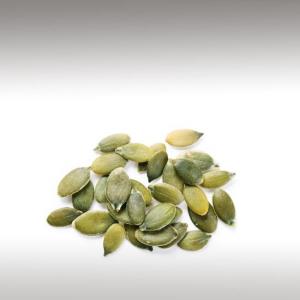

Cucurbita Pepo is a cultivated plant of the genus Cucurbita. It yields varieties of winter squash and Pumpkin, but the most widespread varieties belong to Cucurbita Pepo, called Summer Squash.
Cucurbita Pepo is one of the oldest, if not the oldest domesticated species. The oldest known locations are in southern Mexico in Oaxaca 8,000 - 10,000 years ago and Ocampo, Tamaulipas, Mexico about 7,000 years ago. Its ancient territory extended north into Texas and up the Greater Mississippi River Valley into Illinois and east to Florida, and possibly even to Maine. It is known to have appeared in Missouri at least 4,000 years ago. Some varieties grow in arid regions and some in moist regions.
Due to their varied genetic background, members of Cucurbita Pepo vary widely in appearance, primarily in regards to their fruits. The plants are typically 1,0 - 2,5 feet high, 2 - 3 feet wide, and have yellow flowers. Within Cucurbita Pepo, the Pumpkins, Scallops, and possibly Crooknecks are ancient and were domesticated separately. The domesticated species have larger fruits and larger yet fewer seeds. Parthenocarpy is known to occur in certain cultivars of Cucurbita pepo.
Pumpkin Seed oil has an intense nutty taste and is rich in polyunsaturated fatty acids. Browned oil has a bitter taste.
Pumpkin Seed oil is extracted from Pumpkin Seeds that have been coarsely ground and toasted at temperatures of about 60 °C. Only by this procedure, its typical flavour is developed.
Pumpkin Seed oils obtained by cold extraction are comparably tasteless. In the last years, production of Pumpkin Seed oil has much increased, since Austria’s EU membership has opened new markets.
Today the oil is an important export commodity of Austria and Slovenia. It is made by pressing roasted, hulled Pumpkin Seeds (Pepitas), from a local variety of pumpkin, the "Styrian oil Pumpkin". It has been produced and used in Styria's southern parts at least since the 18th century.
Styrian Pumpkin Seed oil is a dark greenish - black liquid, reddish on reflection and has an intense, nutty odour and flavour. It is often termed the "Styrian Black Gold" in reference to its dark colour similar to petroleum.
The viscous oil is light to very dark green to dark red in colour depending on the thickness of the observed sample. The oil appears green in thin layer and red in thick layer. Such optical phenomenon is called dichromatism.
Pumpkin oil is one of the substances with strongest dichromatism.
Chemical structure:
Pumpkin Seeds are rich sources offatty acids. The four dominant fatty acidsare palmitic, stearic, oleic, and linoleic acid.
HPLC analysis of the powerful pigments found in Pumpkin Seed oil reveal a number of carotenoids - the main components being beta catotene and lutein. In addition other carotenoids present include - violaxanthin, luteoxanthin, auroxanthin, flavoxanthin, chrysanthemaxanthin, alpha-cryptoxanthin, beta-cryptoxanthin and alpha-carotene.
Pumpkin Seeds contain 30 - 50% oil composed mainly offatty acids including palmitic, stearic, oleic and linoleic acids (these four fatty acids make up 98% of the total amount of fatty acids)
Tocopherols including beta-, gamma- and delta-tocopherol and carotenoids including lutein and beta - carotene.
Pumpkin Seed oil contains lipids:
Fatty acids, total saturated - 19,9%
Fatty acids, total monounsaturated - 32,4%
Oleic acid - 32,2%
Fatty acids, total polyunsaturated - 47,7%
Linoleic acid - 47,3%g
Linolenic acid - 0,46%
Phytosterols (in free and bound forms) approximately - 2g/100g
Cholesterol - 0g/100g.
Pumpkin Seed oil used locally in Eritrea was found to be rich in oil (approximately 35%), protein (38%), alpha - tocoferols (3mg/100 g) and carbohydrate content (approximately 37%).
The four dominant fatty acids found were: palmitic (13,3%), stearic (8,0%), oleic (29,0%) and linoleic (47,0%).
Variation in nutrient content exists between different cultivars and varieties of Pumpkin.
The flavour of Pumpkin Seeds and Pumpkin Seed oil develops in a toasting procedure, which is applied to the seeds immediately before extracting the oil. In this process, a multitude of volatile, flavourful compounds forms via the Maillard reaction. There is little scientific research in that field, but it seems that the most important flavour contributions come from pyrazines, 2,6 - dimethylpyrazine.
Cucurbita Pepo is one of the oldest, if not the oldest domesticated species. The oldest known locations are in southern Mexico in Oaxaca 8,000 - 10,000 years ago and Ocampo, Tamaulipas, Mexico about 7,000 years ago. Its ancient territory extended north into Texas and up the Greater Mississippi River Valley into Illinois and east to Florida, and possibly even to Maine. It is known to have appeared in Missouri at least 4,000 years ago. Some varieties grow in arid regions and some in moist regions.
Due to their varied genetic background, members of Cucurbita Pepo vary widely in appearance, primarily in regards to their fruits. The plants are typically 1,0 - 2,5 feet high, 2 - 3 feet wide, and have yellow flowers. Within Cucurbita Pepo, the Pumpkins, Scallops, and possibly Crooknecks are ancient and were domesticated separately. The domesticated species have larger fruits and larger yet fewer seeds. Parthenocarpy is known to occur in certain cultivars of Cucurbita pepo.
Pumpkin Seed oil has an intense nutty taste and is rich in polyunsaturated fatty acids. Browned oil has a bitter taste.
Pumpkin Seed oil is extracted from Pumpkin Seeds that have been coarsely ground and toasted at temperatures of about 60 °C. Only by this procedure, its typical flavour is developed.
Pumpkin Seed oils obtained by cold extraction are comparably tasteless. In the last years, production of Pumpkin Seed oil has much increased, since Austria’s EU membership has opened new markets.
Today the oil is an important export commodity of Austria and Slovenia. It is made by pressing roasted, hulled Pumpkin Seeds (Pepitas), from a local variety of pumpkin, the "Styrian oil Pumpkin". It has been produced and used in Styria's southern parts at least since the 18th century.
Styrian Pumpkin Seed oil is a dark greenish - black liquid, reddish on reflection and has an intense, nutty odour and flavour. It is often termed the "Styrian Black Gold" in reference to its dark colour similar to petroleum.
The viscous oil is light to very dark green to dark red in colour depending on the thickness of the observed sample. The oil appears green in thin layer and red in thick layer. Such optical phenomenon is called dichromatism.
Pumpkin oil is one of the substances with strongest dichromatism.
Chemical structure:
Pumpkin Seeds are rich sources offatty acids. The four dominant fatty acidsare palmitic, stearic, oleic, and linoleic acid.
HPLC analysis of the powerful pigments found in Pumpkin Seed oil reveal a number of carotenoids - the main components being beta catotene and lutein. In addition other carotenoids present include - violaxanthin, luteoxanthin, auroxanthin, flavoxanthin, chrysanthemaxanthin, alpha-cryptoxanthin, beta-cryptoxanthin and alpha-carotene.
Pumpkin Seeds contain 30 - 50% oil composed mainly offatty acids including palmitic, stearic, oleic and linoleic acids (these four fatty acids make up 98% of the total amount of fatty acids)
Tocopherols including beta-, gamma- and delta-tocopherol and carotenoids including lutein and beta - carotene.
Pumpkin Seed oil contains lipids:
Fatty acids, total saturated - 19,9%
Fatty acids, total monounsaturated - 32,4%
Oleic acid - 32,2%
Fatty acids, total polyunsaturated - 47,7%
Linoleic acid - 47,3%g
Linolenic acid - 0,46%
Phytosterols (in free and bound forms) approximately - 2g/100g
Cholesterol - 0g/100g.
Pumpkin Seed oil used locally in Eritrea was found to be rich in oil (approximately 35%), protein (38%), alpha - tocoferols (3mg/100 g) and carbohydrate content (approximately 37%).
The four dominant fatty acids found were: palmitic (13,3%), stearic (8,0%), oleic (29,0%) and linoleic (47,0%).
Variation in nutrient content exists between different cultivars and varieties of Pumpkin.
The flavour of Pumpkin Seeds and Pumpkin Seed oil develops in a toasting procedure, which is applied to the seeds immediately before extracting the oil. In this process, a multitude of volatile, flavourful compounds forms via the Maillard reaction. There is little scientific research in that field, but it seems that the most important flavour contributions come from pyrazines, 2,6 - dimethylpyrazine.
Submitted by OperaDreamhouse (June 1, 2015)
Rice Bran Oil ☸ Base oils ☸ Base / General
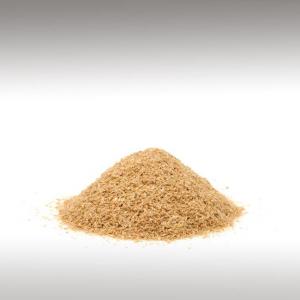

Rice Bran oil is popular as a “Healthy oil” in Japan, Asia, and particularly India. Be careful not to confuse Rice Bran with other forms of Bran such as Oat and Wheat Bran.
Rice Bran oil is the oil extracted from the hard outer brown layer of Rice after chaff ( Rice husk). It is notable for its high smoke point of 232 °C and its mild flavor, making it suitable for high-temperature cooking methods such as stir frying and deep frying.
The Bran fraction, which includes the Germ or embryo in most commercial milling operations, represents only about 8% of paddy weight but contains about three - fourths of the total oil. Containing about 15 - 20% oil (the same general range of Soybeans), rice bran is commercially feasible for oilextraction.
It has a very appealing nut - like flavor and once extracted is very stable with good fry - life. But perhaps its most notable feature is its high level of components with nutraceutical value such as gamma - oryzanol and tocotrienols.
Rice Bran oil is made from the most nutritious part of rice, the Bran and Germ. The most growing Rice Bran oil is made in Thailand. Thai Rice which has been grown sustainably for thousands of years.
Chemical structure:
Rice Bran oil is truly "The World's Healthiest" edible oil, containing Vitamins, antioxidants, nutrients and trans fat free.
Rice Bran oil has a composition similar to that of Peanut oil, with 38% monounsaturated, 37% polyunsaturated, and 25% saturated fatty acids.
Fatty acid composition:
Myristic acid - 6%
Palmitic acid - 5%
Stearic acid - 2,9%
Oleic acid (an omega - 9 fatty acid) - 38,4%
Linoleic acid (LA, an omega - 6 fatty acid) - 34,4%
α-Linolenic acid (ALA, an omega - 3 fatty acid) - 2,2%
One major problem with this oil is its ratio of omega - 6 to omega - 3. Rice Bran oil contains high amounts of omega - 6 fatty acids (linoleic acid) and virtually no omega - 3 (linolenic acid). This fact alone is enough to strike this oil out of diet permanently unless you are supplementing with omega - 3.
The ideal ratio between these two fatty acids is 1:1 and the nutritional habits of most people in developed nations has this ratio soaring more than 15:1 (omega - 6: omega - 3).
Rice Bran oil may also have the potential to be genetically modified in the future, so it's important to ensure only organic sources of this oil are used. Rice Bran itself is also potentially high in arsenic so this is another level of concern which requires more research.
Rice Bran oil is the oil extracted from the hard outer brown layer of Rice after chaff ( Rice husk). It is notable for its high smoke point of 232 °C and its mild flavor, making it suitable for high-temperature cooking methods such as stir frying and deep frying.
The Bran fraction, which includes the Germ or embryo in most commercial milling operations, represents only about 8% of paddy weight but contains about three - fourths of the total oil. Containing about 15 - 20% oil (the same general range of Soybeans), rice bran is commercially feasible for oilextraction.
It has a very appealing nut - like flavor and once extracted is very stable with good fry - life. But perhaps its most notable feature is its high level of components with nutraceutical value such as gamma - oryzanol and tocotrienols.
Rice Bran oil is made from the most nutritious part of rice, the Bran and Germ. The most growing Rice Bran oil is made in Thailand. Thai Rice which has been grown sustainably for thousands of years.
Chemical structure:
Rice Bran oil is truly "The World's Healthiest" edible oil, containing Vitamins, antioxidants, nutrients and trans fat free.
Rice Bran oil has a composition similar to that of Peanut oil, with 38% monounsaturated, 37% polyunsaturated, and 25% saturated fatty acids.
Fatty acid composition:
Myristic acid - 6%
Palmitic acid - 5%
Stearic acid - 2,9%
Oleic acid (an omega - 9 fatty acid) - 38,4%
Linoleic acid (LA, an omega - 6 fatty acid) - 34,4%
α-Linolenic acid (ALA, an omega - 3 fatty acid) - 2,2%
One major problem with this oil is its ratio of omega - 6 to omega - 3. Rice Bran oil contains high amounts of omega - 6 fatty acids (linoleic acid) and virtually no omega - 3 (linolenic acid). This fact alone is enough to strike this oil out of diet permanently unless you are supplementing with omega - 3.
The ideal ratio between these two fatty acids is 1:1 and the nutritional habits of most people in developed nations has this ratio soaring more than 15:1 (omega - 6: omega - 3).
Rice Bran oil may also have the potential to be genetically modified in the future, so it's important to ensure only organic sources of this oil are used. Rice Bran itself is also potentially high in arsenic so this is another level of concern which requires more research.
Submitted by OperaDreamhouse (June 1, 2015)
Ravensara Essential Oil (Ravensara Aromatica) ☸ Essential oils ☸ Base / General
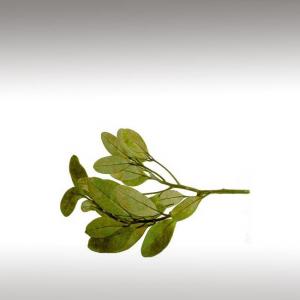

Botanical Name: Ravensara aromatica
Common Method of Extraction: Steam distillation
Part Typically Used: Leaves
Color: Pale yellow
Consistency: Thin
Perfumery Note: Medium
Strength of Initial Aroma: Clean and fresh scent, slightly spicy, camphory, woody herbaceous.
Ravintsara and Ravensara are both obtained from trees belonging in the Lauraceae family. The Lauraceae family includes Camphor (Cinnamomum Camphora "Monum"), Cinnamon (Cinnamomum Zeylanicum), bay Laurel (Laurus Nobilis), Rosewood (Aniba Rosaeodora), Ho Wood (Cinnamomum Camphora), May Chang (Litsea Cubeba), Ravensara (Ravensara Aromatica), Ravintsara (Cinnamomum Camphora).
Ravensara (Ravensara Aromatica) and Ravintsara (Cinnamomum Camphora) are two essential oilsdistilled from 2 very different trees. For many years, oils from both trees have been distilled and traded on the market as Ravensara with a reference to the botanical names Ravensara Aromatica or Cinnamonum Camphora. It is only a few years ago that research into the chemical make up of these oils has finally given them their distinctive botanical identity.
Ravensara Aromatica is a member of the Lauraceae (laurel) family, and originates in Madagascar. The name Ravensara is a latinization of the Malagasy word Ravintsara. Other Malagasy names include Havozo, Hazomanitra and Tavolomanitra. The leaves and twigs of Ravensara Aromatica have a mildly camphorous aroma similar to Eucalyptus.
This tree itself is quite aromatic and releases a fragrant aroma.
The people of Madagascar refer to Ravensara essential oil as the oil that heals. The name of the tree in Malagasy means “Aromatic Leaf”, which may be the reason why different botanical species are sometimes offered under this name.
Ravensara Aromatica originates from Australia. Two oils are produced from the tree, one from the leaves - Ravensara Aromatica - and one from the bark - Ravensara Anisata. Both oils contain a very high level of methylchavicol (estragol) (70 to 90%) a suspected carcinogen.
Common Method of Extraction: Steam distillation
Part Typically Used: Leaves
Color: Pale yellow
Consistency: Thin
Perfumery Note: Medium
Strength of Initial Aroma: Clean and fresh scent, slightly spicy, camphory, woody herbaceous.
Ravintsara and Ravensara are both obtained from trees belonging in the Lauraceae family. The Lauraceae family includes Camphor (Cinnamomum Camphora "Monum"), Cinnamon (Cinnamomum Zeylanicum), bay Laurel (Laurus Nobilis), Rosewood (Aniba Rosaeodora), Ho Wood (Cinnamomum Camphora), May Chang (Litsea Cubeba), Ravensara (Ravensara Aromatica), Ravintsara (Cinnamomum Camphora).
Ravensara (Ravensara Aromatica) and Ravintsara (Cinnamomum Camphora) are two essential oilsdistilled from 2 very different trees. For many years, oils from both trees have been distilled and traded on the market as Ravensara with a reference to the botanical names Ravensara Aromatica or Cinnamonum Camphora. It is only a few years ago that research into the chemical make up of these oils has finally given them their distinctive botanical identity.
Ravensara Aromatica is a member of the Lauraceae (laurel) family, and originates in Madagascar. The name Ravensara is a latinization of the Malagasy word Ravintsara. Other Malagasy names include Havozo, Hazomanitra and Tavolomanitra. The leaves and twigs of Ravensara Aromatica have a mildly camphorous aroma similar to Eucalyptus.
This tree itself is quite aromatic and releases a fragrant aroma.
The people of Madagascar refer to Ravensara essential oil as the oil that heals. The name of the tree in Malagasy means “Aromatic Leaf”, which may be the reason why different botanical species are sometimes offered under this name.
Ravensara Aromatica originates from Australia. Two oils are produced from the tree, one from the leaves - Ravensara Aromatica - and one from the bark - Ravensara Anisata. Both oils contain a very high level of methylchavicol (estragol) (70 to 90%) a suspected carcinogen.
Submitted by OperaDreamhouse (June 1, 2015)
Melissa Essential Oil (Melissa Officinalis) ☸ Essential oils ☸ Base / General
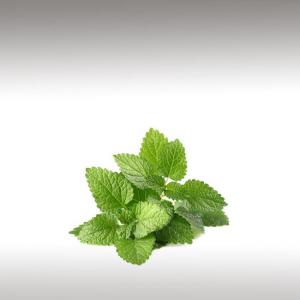

Botanical Name: Melissa officinalis
Common Method of Extraction: Steam distillation
Part Typically Used: Fresh flowering tops, leaves and stems
Color: Pale yellow
Consistency: Thin
Perfumery Note: Top / middle
Strength of Initial Aroma: Sweet, fresh and citrus-like smell.
Melissa officinalis, known as Lemon Balm, balm or Balm Mint, is a perennial herbaceous plant in the mint family Lamiaceae, native to south-central Europe, North Africa, the Mediterranean region, and Central Asia.
It grows to 70 - 150 cm tall. The leaves have a gentle lemon scent, related to mint. During summer, small white flowers full of nectar appear. The white flowers attract bees, hence the genus name Melissa (Greek for 'honey bee'). Its flavour comes from citronellal(24%), geranial (16%), linalyl acetate (12%) and caryophyllene (12%).
In mild temperate zones, the stems of the plant die off at the start of the winter, but shoot up again in spring. Lemon Balm grows vigorously and should not be planted where it will spread into other plantings.
In the 14th century it was included in tonic water made by the French Carmelite nuns and Paracelsus (1493 - 1541) called this herb "The Elixir of Life" while John Evelyn (1620 -1706) described it as "sovereign for the brain, strengthening the memory, and powerfully chasing away melancholy".
Besides Rose Otto, Melissa essential oil it is one of the most expensive therapeutic oils on the market today (pure therapeutic grade Lemon Balm oil or Melissa oil ranges in price from$150 to $225 for a 5 ml bottle).
Chemical structure:
The main chemical components aretrans-ocimene, cis - ocimene, 3 - octanone, methyl hepenone, cis-3 - hexenol, 3-octanol, 1 - octen - 3 - ol, copaene, citronellal, linalool, b - bourbonene, caryophyllene, a - humulene, neral, germacrene - D, geranial, geranyl acetate, d - cadinene, y - cadinene, nerol and geraniol.
Common Method of Extraction: Steam distillation
Part Typically Used: Fresh flowering tops, leaves and stems
Color: Pale yellow
Consistency: Thin
Perfumery Note: Top / middle
Strength of Initial Aroma: Sweet, fresh and citrus-like smell.
Melissa officinalis, known as Lemon Balm, balm or Balm Mint, is a perennial herbaceous plant in the mint family Lamiaceae, native to south-central Europe, North Africa, the Mediterranean region, and Central Asia.
It grows to 70 - 150 cm tall. The leaves have a gentle lemon scent, related to mint. During summer, small white flowers full of nectar appear. The white flowers attract bees, hence the genus name Melissa (Greek for 'honey bee'). Its flavour comes from citronellal(24%), geranial (16%), linalyl acetate (12%) and caryophyllene (12%).
In mild temperate zones, the stems of the plant die off at the start of the winter, but shoot up again in spring. Lemon Balm grows vigorously and should not be planted where it will spread into other plantings.
In the 14th century it was included in tonic water made by the French Carmelite nuns and Paracelsus (1493 - 1541) called this herb "The Elixir of Life" while John Evelyn (1620 -1706) described it as "sovereign for the brain, strengthening the memory, and powerfully chasing away melancholy".
Besides Rose Otto, Melissa essential oil it is one of the most expensive therapeutic oils on the market today (pure therapeutic grade Lemon Balm oil or Melissa oil ranges in price from$150 to $225 for a 5 ml bottle).
Chemical structure:
The main chemical components aretrans-ocimene, cis - ocimene, 3 - octanone, methyl hepenone, cis-3 - hexenol, 3-octanol, 1 - octen - 3 - ol, copaene, citronellal, linalool, b - bourbonene, caryophyllene, a - humulene, neral, germacrene - D, geranial, geranyl acetate, d - cadinene, y - cadinene, nerol and geraniol.
Submitted by OperaDreamhouse (June 1, 2015)
Rice Bran Oil ☸ Base oils ☸ Beauty / Cosmetics


Thisoil has long been used in Japan as a base for soap, skin moisturizer and protector. It is said to be an effective substitute for lanolin. Rice Bran oil is especially used for treating dry and mature skin.
The oil is purported to reverse the effect of aging by slowing the formation of facial wrinkles thanks to Rice Bran oil's rich concentration of Vitamin E and gamma-oryzanol.
In Japan, women who use rice bran oil on their skin are known as "Rice Bran Beauties".
The oil is purported to reverse the effect of aging by slowing the formation of facial wrinkles thanks to Rice Bran oil's rich concentration of Vitamin E and gamma-oryzanol.
In Japan, women who use rice bran oil on their skin are known as "Rice Bran Beauties".
Submitted by OperaDreamhouse (June 1, 2015)
Linden Blossom Essential Oil (Tilia Vulgaris) ☸ Essential oils ☸ Base / General
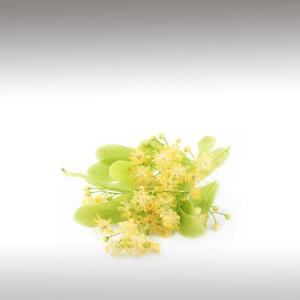

Botanical Name: Tilia vulgaris
Common Method of Extraction: Solvent Extracted
Part Typically Used: Flowers
Color: Yellow brown to yellow, deep coffee brown
Consistency: Medium
Perfumery Note: Middle
Strength of Initial Aroma: Sweet, deep and slightly spicy, rather long lasting, warm, floral, honey - like, with a slight citrus-like note.
This is an extremely thick, almost solid extract.
Lime Blossom or Linden Blossom is particularly popular in France. Its essential oil is actually an absolute, which means that the oil is extracted by adding a solvent.
Although Linden Blossom grows widely and is used as herb, the essential oil is hard to come by. It is cultivated limitedly and mostly in France.
The genus is generally called Lime or Linden in Britain and Linden, Lime, or Basswood in North America.
Latin Tilia is cognate to Greek Ptelea, "Elm Tree", Tiliai "Black Poplar", ultimately from a Proto - Indo - European word Ptel - ei̯ā with a meaning of "Broad" (feminine), perhaps "Broad - Leaved" or similar.
Linden is one of the most important trees in European, Eastern Asian and North American forests. It grows mostly in mixed forests with other deciduous and evergreen trees. In Europe there are a lot of places named after Linden tree.
The Linden tree is a medium sized tree with dark green heart - shaped leaves, with blue - green undersides. Tilia species are mostly large, deciduous trees, reaching typically 20 - 40 metres tall, with oblique-cordate leaves 6 - 20 centimetres across. As with elms, the exact number of species is uncertain, as many if not most of the species will hybridise readily, both in the wild and in cultivation.
Limes are hermaphroditic, having perfect flowers with both male and female parts, pollinated by insects.
The tree has fragrant yellow - white flowers, followed by round green fruits. The flowers are an aromatic, mucilaginous herb with diuretic, expectorant and calming properties.
No other tree features as prominently in popular poetry, songs and literature as the Linden. The Linden was also a highly symbolic and hallowed tree to the Germanic people in their native pre - Christian mythology.
Naturally, this motherly tree is also protective against witches, devils and other evil spirits.
Linden is a Mother of a Tree - everything about her is feminine, nurturing, loving and caring as only mothers can be. She spreads her branches protectively like and arboreal embrace.In Norse and Germanic mythology she is sacred to Freya or Frigga, Goddesses of Love and in the hearts and minds of the people she was perhaps the most beloved of all trees.
Linden trees were especially honoured in Slavic countries, but also in France and Germany, where just about every village had a central Linden tree that served as the social and cultural focal point of village life.
The outpouring of nectar from her flowers provides a feast for gazillions of bees and epitomizes her generous, providing nature. Bees, of course, are sacred to the Great Mother Goddess and the honey they produce is nectar for the Gods.
In Greek mythology Homer, Horace, Virgil, and Pliny mention the Linden tree and its virtues. As Ovid tells the old story of Baucis and Philemon, she was changed into a Linden and he into an Oak when the time came for them both to die.
According to a folklore, the Linden tree was blessed with all these virtues by Mary, mother of Jesus. One day Jesus was wandering the earth feeling tired and ill. He lay down to rest under a Linden tree and fell asleep. Protectively the Linden tree spread her branches over the sick man. Some time later Mary, who had followed him, came by and found her son under the tree. Alas, when he woke up he was cured and restored. Mary, grateful to the tree for having so lovingly cared for her son, blessed it with healing and protective virtues, of which it has given generously ever since.
Common Method of Extraction: Solvent Extracted
Part Typically Used: Flowers
Color: Yellow brown to yellow, deep coffee brown
Consistency: Medium
Perfumery Note: Middle
Strength of Initial Aroma: Sweet, deep and slightly spicy, rather long lasting, warm, floral, honey - like, with a slight citrus-like note.
This is an extremely thick, almost solid extract.
Lime Blossom or Linden Blossom is particularly popular in France. Its essential oil is actually an absolute, which means that the oil is extracted by adding a solvent.
Although Linden Blossom grows widely and is used as herb, the essential oil is hard to come by. It is cultivated limitedly and mostly in France.
The genus is generally called Lime or Linden in Britain and Linden, Lime, or Basswood in North America.
Latin Tilia is cognate to Greek Ptelea, "Elm Tree", Tiliai "Black Poplar", ultimately from a Proto - Indo - European word Ptel - ei̯ā with a meaning of "Broad" (feminine), perhaps "Broad - Leaved" or similar.
Linden is one of the most important trees in European, Eastern Asian and North American forests. It grows mostly in mixed forests with other deciduous and evergreen trees. In Europe there are a lot of places named after Linden tree.
The Linden tree is a medium sized tree with dark green heart - shaped leaves, with blue - green undersides. Tilia species are mostly large, deciduous trees, reaching typically 20 - 40 metres tall, with oblique-cordate leaves 6 - 20 centimetres across. As with elms, the exact number of species is uncertain, as many if not most of the species will hybridise readily, both in the wild and in cultivation.
Limes are hermaphroditic, having perfect flowers with both male and female parts, pollinated by insects.
The tree has fragrant yellow - white flowers, followed by round green fruits. The flowers are an aromatic, mucilaginous herb with diuretic, expectorant and calming properties.
No other tree features as prominently in popular poetry, songs and literature as the Linden. The Linden was also a highly symbolic and hallowed tree to the Germanic people in their native pre - Christian mythology.
Naturally, this motherly tree is also protective against witches, devils and other evil spirits.
Linden is a Mother of a Tree - everything about her is feminine, nurturing, loving and caring as only mothers can be. She spreads her branches protectively like and arboreal embrace.In Norse and Germanic mythology she is sacred to Freya or Frigga, Goddesses of Love and in the hearts and minds of the people she was perhaps the most beloved of all trees.
Linden trees were especially honoured in Slavic countries, but also in France and Germany, where just about every village had a central Linden tree that served as the social and cultural focal point of village life.
The outpouring of nectar from her flowers provides a feast for gazillions of bees and epitomizes her generous, providing nature. Bees, of course, are sacred to the Great Mother Goddess and the honey they produce is nectar for the Gods.
In Greek mythology Homer, Horace, Virgil, and Pliny mention the Linden tree and its virtues. As Ovid tells the old story of Baucis and Philemon, she was changed into a Linden and he into an Oak when the time came for them both to die.
According to a folklore, the Linden tree was blessed with all these virtues by Mary, mother of Jesus. One day Jesus was wandering the earth feeling tired and ill. He lay down to rest under a Linden tree and fell asleep. Protectively the Linden tree spread her branches over the sick man. Some time later Mary, who had followed him, came by and found her son under the tree. Alas, when he woke up he was cured and restored. Mary, grateful to the tree for having so lovingly cared for her son, blessed it with healing and protective virtues, of which it has given generously ever since.
Submitted by OperaDreamhouse (May 31, 2015)
Coriander Essential Oil (Coriandrum Sativum) ☸ Essential oils ☸ Base / General
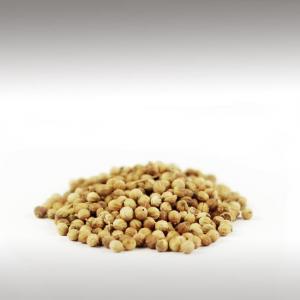

Botanical Name: Coriandrum sativum
Common Method of Extraction: Steam distillation
Part Typically Used: Crushed ripe seeds
Color: Pale yellow
Consistency: Thin
Perfumery Note: Top
Strength of Initial Aroma: Sweet, spicy, warm smell.
Coriander also known as Cilantro Chinese Parsley or Dhania, is an annual herb in the family Apiaceae. Coriander is native to regions spanning from southern Europe and northern Africa to southwestern Asia. An herb originating in Egypt.
The annual or biennial plant is a native of Morocco and grows to about 1 meter in height. The leaves are variable in shape, broadly lobed at the base of the plant, and slender and feathery higher on the flowering stems. The flowers are borne in small umbels, white or very pale pink. The fruit is a globular, dry schizocarp 3-5 mm in diameter. The seeds are generally used as a spice or an added ingredient in other foods or recipes, although sometimes they are eaten alone.
The leaves, when crushed, give off an unpleasant odor like squashed bugs. The Greek name "Koris" is the root word for Coriander.
The seeds have been used for thousands of years by the Egyptians, as an aphrodisiac (with seeds even found in the tomb of Tutankhamun) and by the Romans and Greeks to flavor their wines, while the Indians use it in their cooking.
The Carmelite order in France used the seeds to flavor their 17th century toilet water.
Chemicla strucutre:
Coriander oil is extracted from the crushed ripe seeds bysteam distillation and yields 0,8-1,0 % oil.
Coriander essential oil consists of compounds likeBorneol, Cineole, Cymene, Dipentene, Linalool, Phellandrene, Pinene, Terpineol and Terpinolene.
Common Method of Extraction: Steam distillation
Part Typically Used: Crushed ripe seeds
Color: Pale yellow
Consistency: Thin
Perfumery Note: Top
Strength of Initial Aroma: Sweet, spicy, warm smell.
Coriander also known as Cilantro Chinese Parsley or Dhania, is an annual herb in the family Apiaceae. Coriander is native to regions spanning from southern Europe and northern Africa to southwestern Asia. An herb originating in Egypt.
The annual or biennial plant is a native of Morocco and grows to about 1 meter in height. The leaves are variable in shape, broadly lobed at the base of the plant, and slender and feathery higher on the flowering stems. The flowers are borne in small umbels, white or very pale pink. The fruit is a globular, dry schizocarp 3-5 mm in diameter. The seeds are generally used as a spice or an added ingredient in other foods or recipes, although sometimes they are eaten alone.
The leaves, when crushed, give off an unpleasant odor like squashed bugs. The Greek name "Koris" is the root word for Coriander.
The seeds have been used for thousands of years by the Egyptians, as an aphrodisiac (with seeds even found in the tomb of Tutankhamun) and by the Romans and Greeks to flavor their wines, while the Indians use it in their cooking.
The Carmelite order in France used the seeds to flavor their 17th century toilet water.
Chemicla strucutre:
Coriander oil is extracted from the crushed ripe seeds bysteam distillation and yields 0,8-1,0 % oil.
Coriander essential oil consists of compounds likeBorneol, Cineole, Cymene, Dipentene, Linalool, Phellandrene, Pinene, Terpineol and Terpinolene.
Submitted by OperaDreamhouse (May 31, 2015)
Crushed Chili Pepper Flakes ☸ Ingredients ☸ Base / General
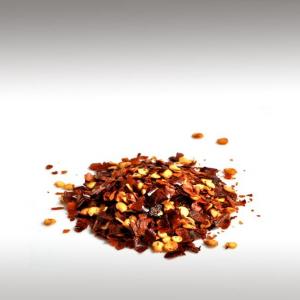

Crushed Red Pepper or Red Pepper Flakes (RPF) is a condiment consisting of dried and crushed (as opposed to ground) Red Chili Peppers.
The condiment is made from hot dried Red Peppers and is not made of one type of Chili, but from various combinations of Ancho,Bbell, Cayenne and other dried Red Peppers.
Often there is a high ratio of seeds, which some people believe intensifies the heat of this flavorful condiment, whereas the heat actually comes from the vein of the Pepper pith (off of which the seeds grow).
Pepper hotness is measured by Scoville units - the higher the Scoville unit, the hotter the Pepper. For example, a Sweet Bell Pepper has zero Scoville units whereas the mighty Habanero Pepper ranges from 100,000 to 350,000. The hottest Pepper on the scale is the Trinidad Scorpion Butch at 1,463,700.
The flavor lasts a bit longer if they are kept refrigerated or kept in a cool dark cabinet away from the heat of the stove and feel that works just fine.
The condiment is made from hot dried Red Peppers and is not made of one type of Chili, but from various combinations of Ancho,Bbell, Cayenne and other dried Red Peppers.
Often there is a high ratio of seeds, which some people believe intensifies the heat of this flavorful condiment, whereas the heat actually comes from the vein of the Pepper pith (off of which the seeds grow).
Pepper hotness is measured by Scoville units - the higher the Scoville unit, the hotter the Pepper. For example, a Sweet Bell Pepper has zero Scoville units whereas the mighty Habanero Pepper ranges from 100,000 to 350,000. The hottest Pepper on the scale is the Trinidad Scorpion Butch at 1,463,700.
The flavor lasts a bit longer if they are kept refrigerated or kept in a cool dark cabinet away from the heat of the stove and feel that works just fine.
Submitted by OperaDreamhouse (May 31, 2015)
Saucepan ☸ Tools ☸ Base / General
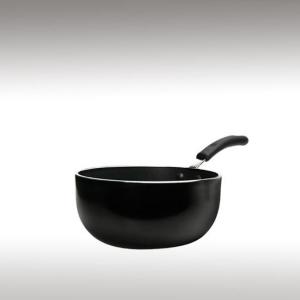

Good - quality Pots and Pans made of the right materials really can improve cooking.
Good heat conductors, such as copper and aluminum, are responsive to temperature changes. They'll do what the heat source tells them to do - heat up, cool down - almost instantly.
For cookingacidic foods, such as tomato sauces, wine sauces, and fruit fillings, a saucepan lining should be nonreactive. Stainless steel, enamel, and anodized aluminum won't react no matter what they touch, while plain aluminum can discolor white sauces and foods that are acidic, sulfurous or alkaline. It can even make those foods taste metallic. Eggs, vegetables in the cabbage family, and Baking soda are some of the other foods vulnerable to aluminum's graying effect.
Good heat conductors, such as copper and aluminum, are responsive to temperature changes. They'll do what the heat source tells them to do - heat up, cool down - almost instantly.
For cookingacidic foods, such as tomato sauces, wine sauces, and fruit fillings, a saucepan lining should be nonreactive. Stainless steel, enamel, and anodized aluminum won't react no matter what they touch, while plain aluminum can discolor white sauces and foods that are acidic, sulfurous or alkaline. It can even make those foods taste metallic. Eggs, vegetables in the cabbage family, and Baking soda are some of the other foods vulnerable to aluminum's graying effect.
Submitted by OperaDreamhouse (May 31, 2015)
Linden Blossom Essential Oil (Tilia Vulgaris) ☸ Essential oils ☸ Spiritual Practises


Linden is the essence of love and compassion, the Green Tara of Trees.
It can be used to meditate on the Motherenergy and to celebrate the mother aspect of the Great Goddess. It represents love in action, compassion and caring.
It can be used to meditate on spiritual and transcendental love and to open the Heart Chakra. Its protective and healing energy is well suited to any healing ritual.
Linden protects against demons that torture the mind with anguish and fear.
It can be used to meditate on the Motherenergy and to celebrate the mother aspect of the Great Goddess. It represents love in action, compassion and caring.
It can be used to meditate on spiritual and transcendental love and to open the Heart Chakra. Its protective and healing energy is well suited to any healing ritual.
Linden protects against demons that torture the mind with anguish and fear.
Submitted by OperaDreamhouse (May 31, 2015)
Page 22 of 48

